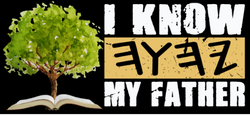Unwrapping Christmas: Surprising Pagan Roots You Didn't Know About
Watch the Full Video Lesson Here:
Introduction:
When you think of Christmas, images of sparkling lights, joyful family gatherings, and festive decorations likely come to mind. It’s a season filled with love, laughter, and cherished traditions. But what if I told you that many of these beloved customs have deep-rooted connections to ancient pagan practices? Christmas, as we know it today, is a fascinating blend of Christian faith and centuries-old traditions that predate it. Let’s dive into the surprising history of this holiday and uncover the origins of some of its most iconic elements.
Here are our favorite bible study tools. Click the link here.
December 25th: A Date with Paganism
The date of December 25th is widely celebrated as the birth of Christ, yet its origins are deeply tied to pagan festivals. Long before Christianity, ancient Romans honored Saturn, the god of agriculture, during a weeklong celebration called Saturnalia. This festive period involved feasting, gift-giving, and decorating homes with greenery—a blueprint for modern Christmas traditions.
In northern Europe, Norse celebrations of Yule also took place around the winter solstice, paying homage to Odin and the returning sun. These festivals symbolized hope and renewal during the darkest days of the year. When Christianity spread, church leaders chose December 25th as the official date to celebrate Christ’s birth, seamlessly merging these pagan customs with Christian beliefs.
Understanding this history challenges us to see Christmas not just as a Christian celebration but as a rich tapestry of ancient and modern traditions woven together over time.
Nimrod's Legacy: The Christmas Tree
The Christmas tree, a centerpiece of holiday decor, has intriguing origins that trace back to ancient Babylonian practices. According to some interpretations, the evergreen tree is linked to the legend of Nimrod, a mighty ruler mentioned in biblical accounts. It’s said that after his death, his mother, Semiramis, propagated the idea of his rebirth, symbolized by an evergreen tree that represented immortality and renewal.
Over centuries, this symbol evolved into the modern Christmas tree we know today. Decorating it with lights and ornaments became a tradition that blends ancient beliefs with festive creativity. Every time we place a star on top or hang ornaments, we’re participating in a tradition with roots far deeper than we might imagine. The Christmas tree serves as a reminder of how history and symbolism shape our modern celebrations.
The Holiday Pressure: Joy or Stress?
For many, the holiday season brings more than just joy—it can also usher in a wave of stress and pressure. From finding the perfect gifts to organizing flawless family gatherings, the quest for holiday perfection often feels overwhelming. Ironically, this pursuit of holiday cheer can sometimes lead to burnout and financial strain, as people feel compelled to meet societal expectations.
This modern-day holiday hustle stands in stark contrast to the simpler celebrations of the past. Ancient festivals like Saturnalia emphasized community and gratitude rather than materialism. Reflecting on this difference invites us to ask: Are we truly savoring the spirit of Christmas, or are we caught in a cycle of consumerism?
Reclaiming the joy of the season means focusing on meaningful connections and personal fulfillment rather than external validation. After all, the best memories are made not in the perfection of our decorations but in the warmth of shared laughter and love.
Gift-Giving and Holly: More Than a Tradition
Exchanging gifts and decorating with holly are hallmarks of Christmas, but their origins reach back to ancient midwinter rituals. During Saturnalia, gift-giving was a way to spread goodwill and strengthen community bonds. Holly, with its vibrant red berries, symbolized protection and renewal, believed to ward off evil spirits and invite blessings for the coming year.
As Christianity spread, these practices were incorporated into the holiday season, blending old and new traditions. Today, while we may not see holly as a magical talisman, it still carries the essence of hope and resilience during the cold winter months. Understanding the origins of these customs adds depth to our celebrations, reminding us of the rich cultural heritage behind even the simplest holiday traditions.
The Santa Mythos: Commercialism Meets Tradition
Santa Claus, the jolly figure beloved by children worldwide, is a fusion of folklore, religion, and modern marketing. His origins can be traced to Saint Nicholas, a Christian bishop known for his generosity, as well as to European pagan figures like Odin, who was believed to bring gifts during Yule.
The modern image of Santa—a cheerful man in a red suit—was popularized in the 1930s through Coca-Cola advertisements. This depiction merged cultural symbols into a universally recognized icon of holiday cheer. While Santa represents joy and generosity, his story also highlights how commercialization has shaped the way we celebrate Christmas.
Reflecting on Santa’s evolution reminds us to balance the magic of the season with its deeper significance. Beyond the gifts and glitz, Christmas is an opportunity to celebrate faith, love, and togetherness.
Conclusion:
Christmas is more than just a Christian holiday; it’s a rich blend of ancient pagan traditions, cultural evolution, and spiritual significance. From the evergreen tree to the jolly figure of Santa, every element of this holiday carries a story that transcends time.
As we hang ornaments, exchange gifts, and gather with loved ones, let’s take a moment to appreciate the layered history behind our celebrations. By understanding the origins of Christmas, we can approach the season with a deeper sense of gratitude, connection, and meaning. Whether you celebrate it for its spiritual significance or its festive joy, Christmas remains a testament to humanity’s ability to find light in the darkest of times.

